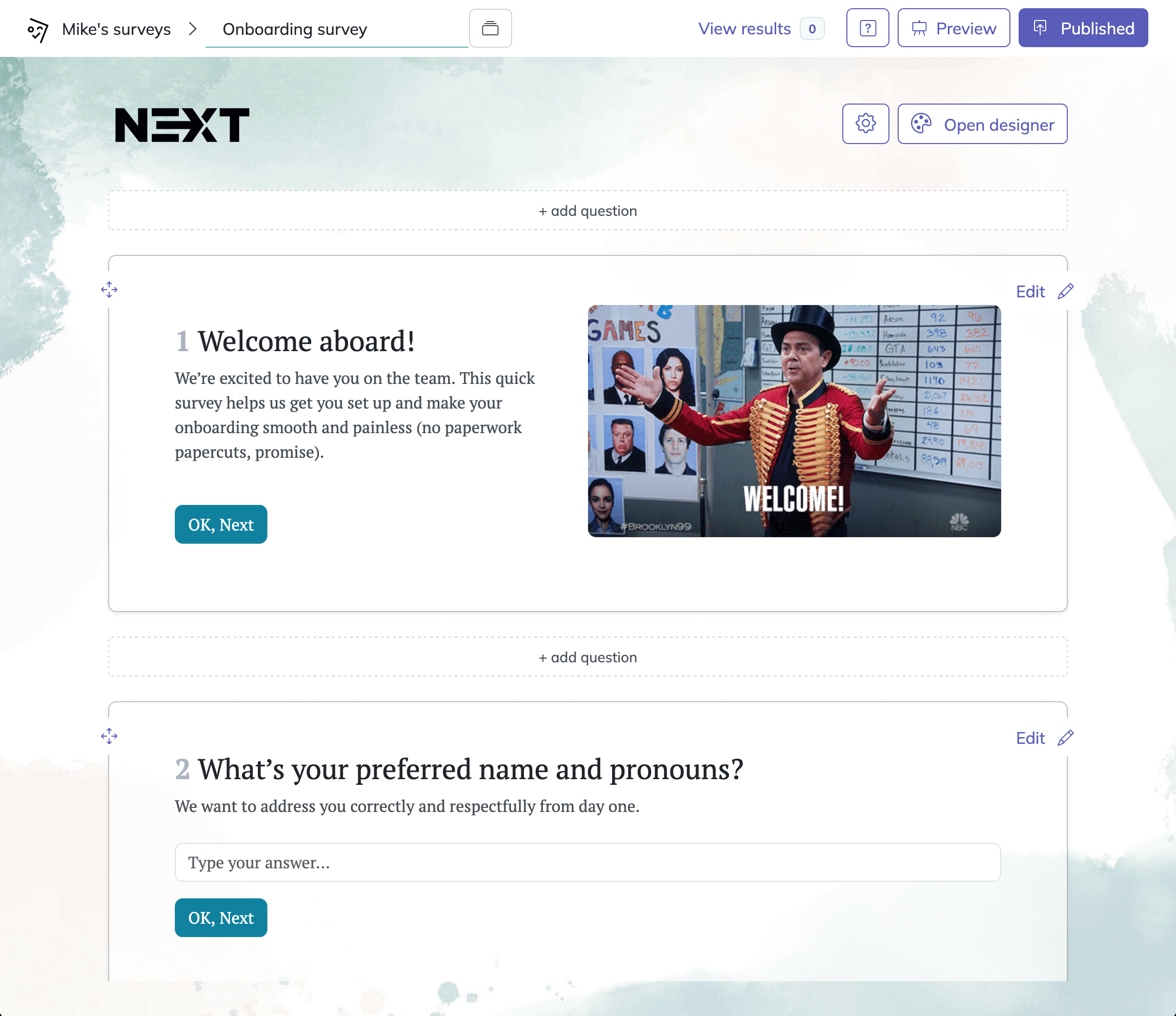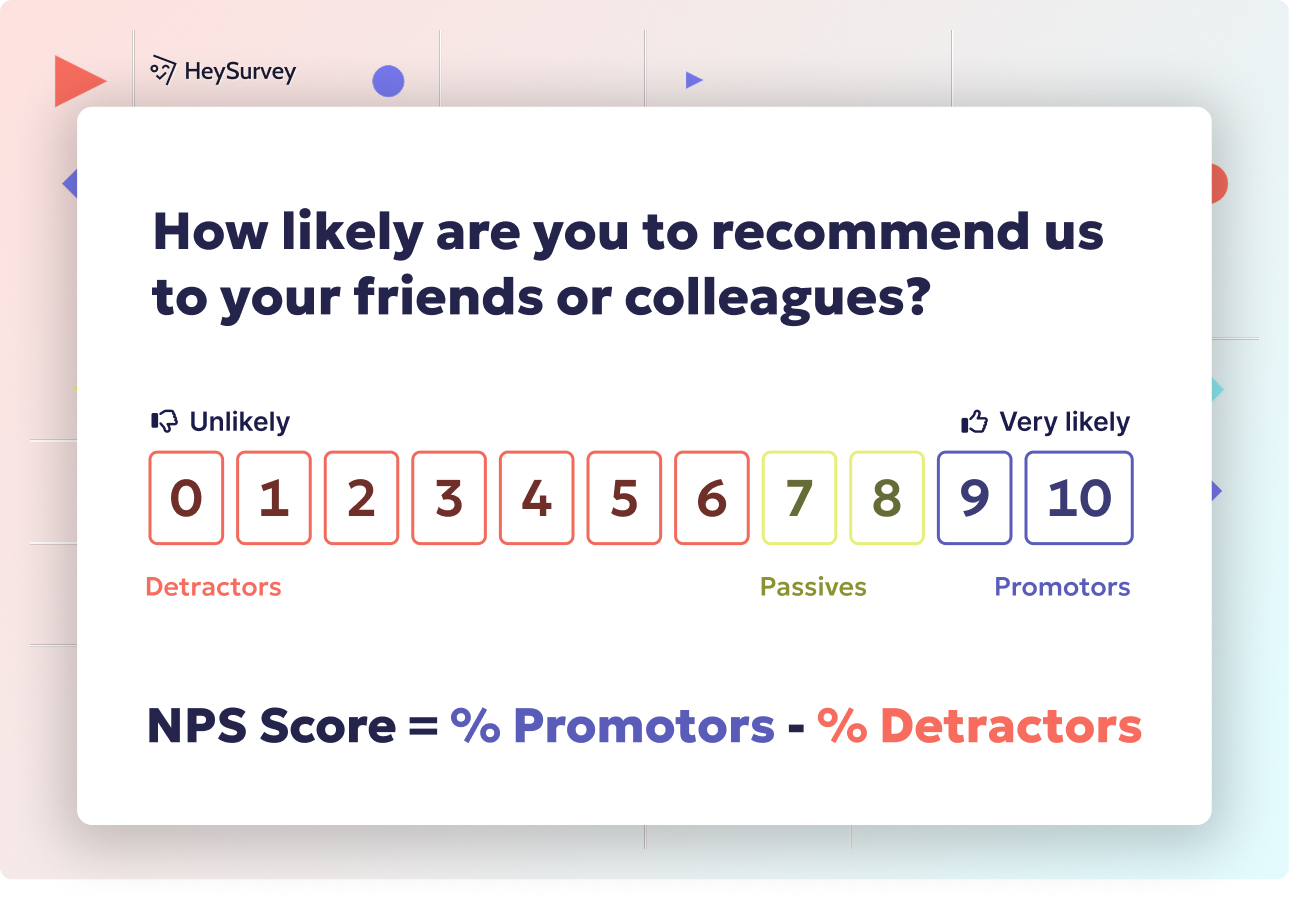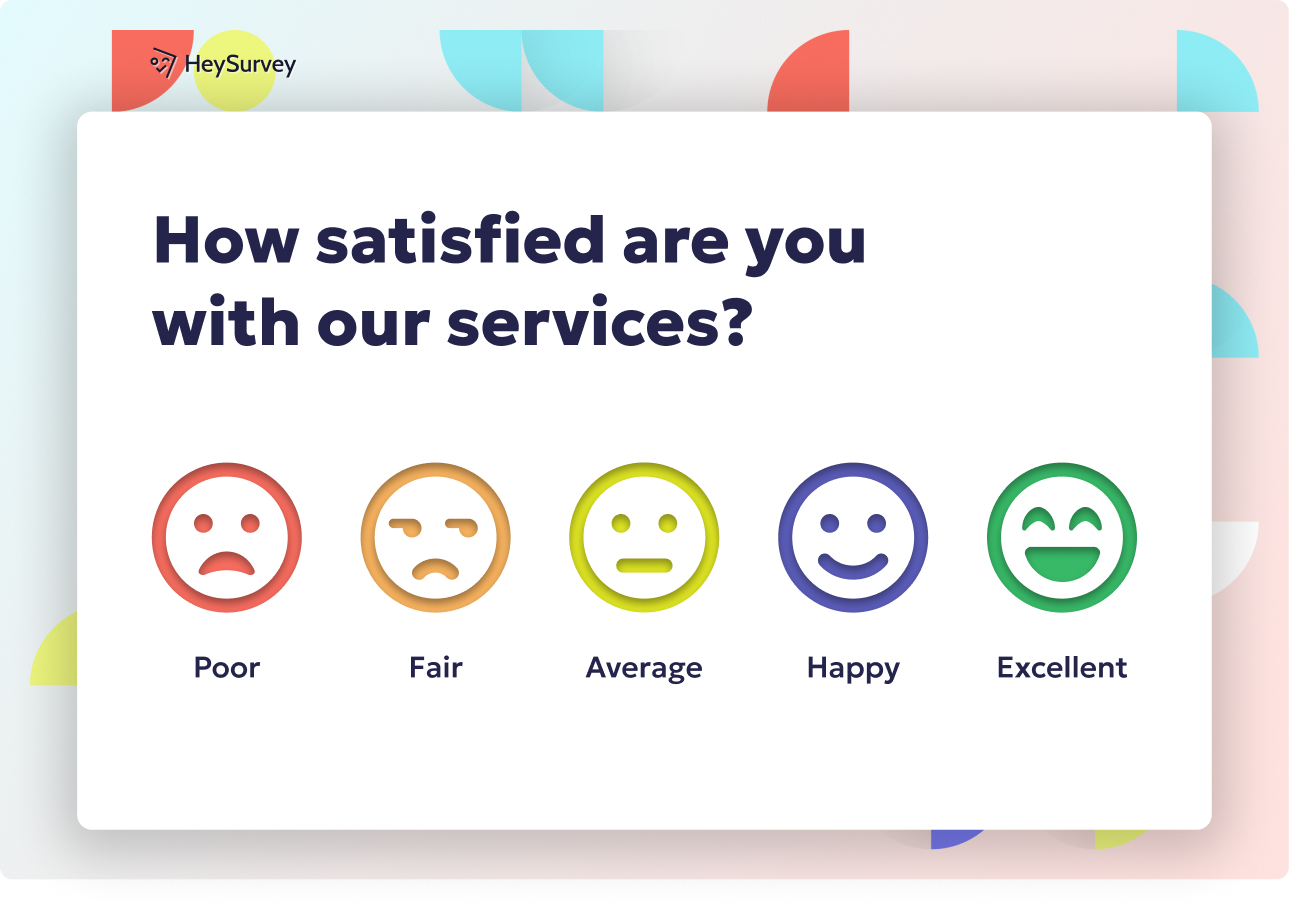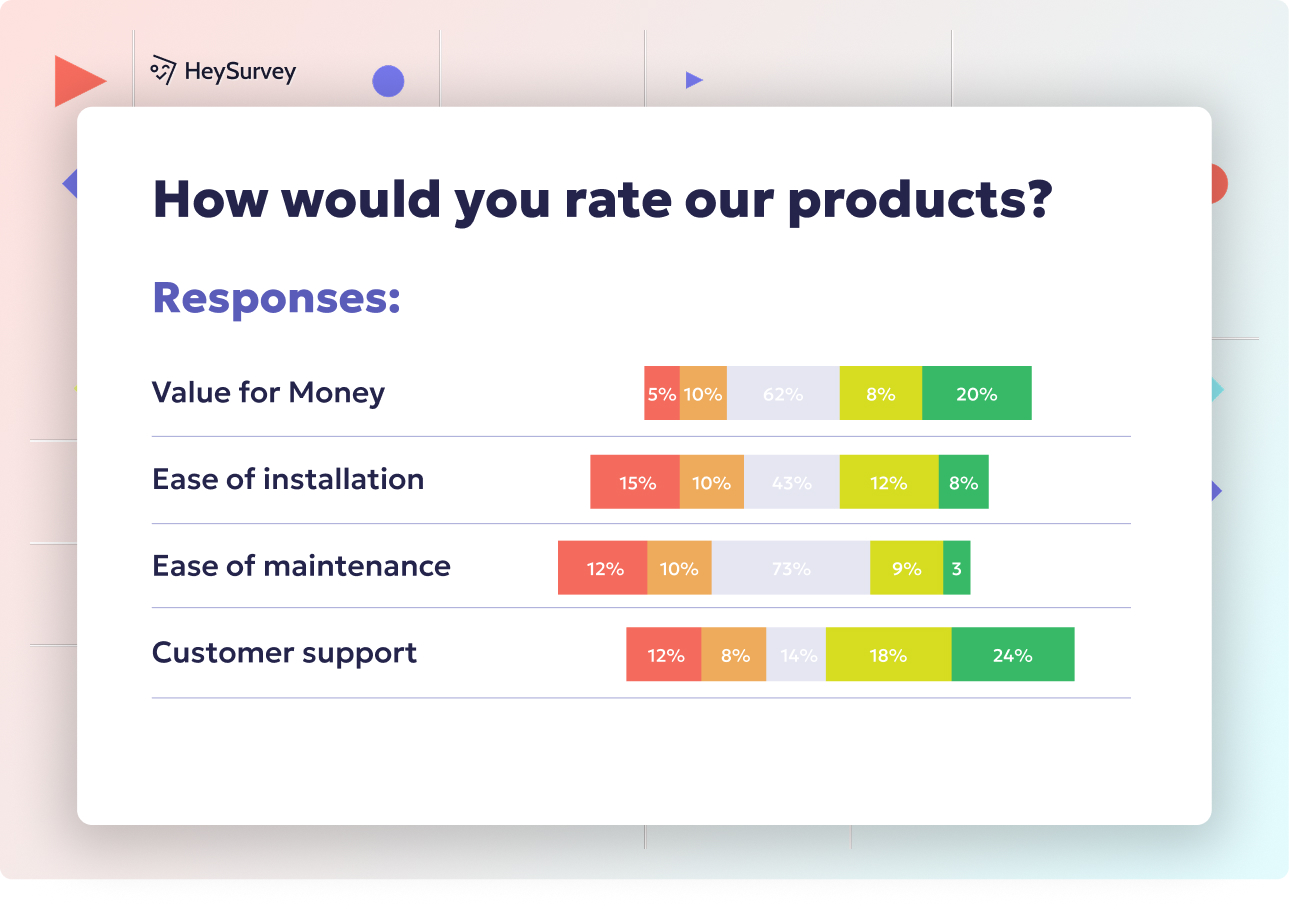32 Training Needs Survey Questions to Identify Skill Gaps Fast
Discover 40+ training needs survey questions to identify skill gaps and design high-impact learning programs aligned with business goals.
The modern workplace is changing at lightning speed. Teams need new skills, tools, and knowledge just to keep up—never mind getting ahead! Using training needs survey questions is the secret sauce for revealing gaps, aligning learning with business strategy, and boosting L&D ROI. Well-designed surveys help you identify employee skill gaps and craft training that actually lands. Below, we’ll walk through eight powerful survey types to supercharge your training needs analysis, ending with must-know best practices for writing a training needs analysis questionnaire that delivers real results.
Skills Gap Assessment Survey
What is a Skills Gap Assessment Survey?
A skills gap assessment survey is your ultimate tool for understanding where current skill levels stand compared to where they should be. This is all about benchmarking—looking at the capabilities your team has today versus the expertise you truly need to meet business goals. Use skills gap analysis questions to discover misalignments before they become headaches.
These surveys deliver a treasure trove of data. You’ll see which skills are well-developed, which need work, and where your “hidden” superstars might be lurking. It’s proactive, not reactive—a chance to close gaps before they widen into potholes.
Teams crave clarity. A good skills gap assessment survey shines a light on everything from technical shortfalls to strengths no one realized existed.
Why and When Should I Use This Survey?
This survey type is a cornerstone for strategic talent planning. Use it for:
- Annual performance cycles to refresh your training map.
- Prior to launching game-changing projects or adopting a new tech stack.
- When your industry faces sudden disruption or you’re scaling fast.
A regular skills gap assessment helps prevent stagnant skill sets, supports promotions, and empowers continuous learning. It’s perfect when you want to match people to roles that actually suit them.
5 Sample Skills Gap Analysis Questions
- Which tasks in your current role do you feel least confident performing?
- Rate your proficiency in the following technical skills (1-Not proficient to 5-Expert).
- Which three skills would most improve your job performance if strengthened?
- How often do you require assistance with new software or tools?
- What barriers prevent you from mastering required job skills?
A skills gap analysis is only as good as the questions you ask. Use this treasure map to unearth what your teams need, before it’s too late.
A 2024 OECD report found that over one-third of firms in five European countries reported skill gaps, particularly in technical, problem-solving, and teamworking skills. (oecd.org)

Creating your own training needs survey with HeySurvey is easier than you might think. Follow these 3 simple steps below to get your survey live—and a couple of bonus tips to make it even better. Ready? Let’s go!
Step 1: Create a New Survey
- Head to HeySurvey and click Create Survey to start fresh or pick one of the handy pre-built templates designed to match common training needs surveys.
- Give your survey an internal name so you can find it easily later (this won’t be visible to your respondents).
- Voilà — your survey workspace (the Survey Editor) opens up, ready for your magic touch.
Step 2: Add Your Questions
- Hit Add Question at the top or between questions to drop in your training needs queries.
- Choose from various question types: multiple choice, rating scales, text inputs, and more.
- Type or paste your carefully crafted questions (like those in the article’s samples), mark questions as required if you want to ensure responses, and add descriptions or images to clarify when needed.
- Bonus: Use branching logic to guide respondents down tailored paths depending on their answers. For example, if someone says they’re unsure about a skill, you can dive deeper into that area.
Step 3: Publish Your Survey
- Once your questions are good to go, click Preview to see how your survey looks and flows.
- Tweak the design or questions if necessary (HeySurvey’s live preview keeps the design panel open for last-minute changes).
- When happy, hit Publish. You’ll get a shareable link to send out or an embed code for your website.
- Keep in mind: publishing requires a HeySurvey account, but creating and editing can be done without signing up.
Bonus Steps: Make It Yours with Branding and Settings
- Apply Your Branding: Upload your company logo and tweak colors, fonts, and backgrounds via the Designer Sidebar. This keeps your survey looking pro and consistent with corporate style.
- Define Settings: Set survey start/end dates, limit responses, redirect respondents after completion, or even allow them to view results (perfect for transparent learning cultures!).
- Jump Into Branching: Use advanced branching to customize question order based on answers, creating a smooth, personalized experience for every respondent.
And when you’re ready, hit the button below to open a training needs survey template and get started right away!
Role-Specific Competency Survey
What Is a Role-Specific Competency Survey?
A role-specific competency survey zeros in on the unique expectations, certifications, and skills tied directly to each job title. Every role is a little universe of its own, with quirky needs and key deliverables. This survey highlights whether employees have the job-specific competency required for their current, or even future, responsibilities.
These surveys let you align learning resources with what actually matters—no more generic programs that barely scratch the surface. When you link survey questions to detailed job descriptions, you start building customized, effective learning pathways for every role.
Why and When Should You Use It?
Want to make the most of promotions, new organizational charts, or internal mobility projects? Deploy a role-specific competency survey to pave the way.
- Before promotions or lateral moves, to ensure people truly fit the role.
- When rolling out new responsibilities or restructuring teams.
- To tailor learning to emerging business needs, keeping everyone “future-ready.”
This is your ticket to personalized progress. It also helps managers spot employees with untapped potential, who just need the right nudge.
5 Sample Role-Specific Competency Questionnaire Questions
- Identify any role-specific certifications you lack but need.
- Which job duties take longer than expected due to limited expertise?
- Rate your competency in the core competencies for your position listed below.
- What advanced skills would help you exceed performance expectations?
- Which upcoming projects highlight gaps in your current competencies?
Customizing training by job-specific competency means your team gets exactly what they need—no more wasted effort, just direct impact.
A study found that integrating competency evaluations into training programs led to a 23% increase in employee productivity within the first year. (psicosmart.net)
Learning Preferences & Styles Survey
What is a Learning Preferences & Styles Survey?
One-size-fits-all training is out. A learning preferences and styles survey helps you capture how employees learn best—whether that’s videos, hands-on missions, or lively discussions. By asking the right learning style survey questions, you cater to diverse learners, increasing both engagement and knowledge retention.
People are more likely to lean in when content fits their natural rhythms. This survey can reveal surprising secrets: maybe your techies hate video training, but love microlearning. Or perhaps night owls secretly wish for on-demand, late-evening courses.
Why and When Should You Use This Survey?
Don’t build another boring course nobody completes! Use this survey at the very start:
- Before designing a new course or curriculum, ensuring “fit” from the beginning.
- When launching cross-functional programs, where learning diversity is higher.
- To boost retention rates, engagement, and voluntary participation.
Tapping into learning preferences saves you from costly mismatches and helps everyone perform at their best.
5 Sample Learning Style Survey Questions
- How do you prefer to learn new information? (videos, reading, hands-on, etc.)
- What is your ideal session length for focused learning?
- Which delivery formats have helped you retain knowledge in the past?
- How important is peer collaboration in your learning process? (1-5 scale)
- When are you most productive for attending training sessions?
Adopting a learning preferences and styles survey guarantees learning sticks—and isn’t just another checklist for your teams.
Leadership Development Needs Survey
What is a Leadership Development Needs Survey?
A leadership skills survey shines a light on what current and emerging leaders need in order to grow. This survey goes beyond management buzzwords, identifying real gaps in coaching, feedback, or strategic thinking. It’s built for succession planning and preparing the next wave of talent.
Think of this as a blueprint for nurturing future leaders. It shows the difference between someone “in charge” and someone who genuinely inspires teams.
Why and When is This Survey Essential?
Leadership is not one-size-fits-all. Use a leadership development needs survey when you want to:
- Identify high-potential employees for the leadership pipeline.
- Customize programs for both new and seasoned managers.
- Build resilience for succession, ensuring your organization is never short on strong leaders.
It’s especially useful for fast-growing companies, or where turnover in senior roles is high.
5 Sample Leadership Skills Survey Questions
- What leadership challenges do you currently face?
- Which leadership competencies (e.g., coaching, conflict management) need improvement?
- Are you interested in mentoring or being mentored?
- How comfortable are you giving constructive feedback to team members?
- Which leadership workshops would benefit you most in the next 12 months?
With a leadership skills survey, you build real talent pipelines, and avoid last-minute scrambles for the next team lead or department head.
Only 7% of organizations consider their leadership development programs to be best in class, highlighting a significant gap in effective leadership training. (harvardbusiness.org)
Compliance & Regulatory Training Needs Survey
What is a Compliance & Regulatory Training Survey?
A compliance training questionnaire is focused on risk—making sure every employee knows the “rules of the road.” For industries where regulation changes regularly or compliance failures are costly, these surveys are absolutely critical.
You’ll target both understanding and confidence—making sure nobody’s asking, “Wait, was that a policy update?” after the fact. The aim is simple: peace of mind. Regulatory slip-ups cost money, time, and reputation.
Why and When to Use This Survey?
When new policies drop or you’re in a highly regulated field, deploy early and often:
- Immediately after major policy updates or regulatory changes.
- During routine compliance cycles or annual mandatory training.
- Whenever audit findings or incident reports highlight knowledge gaps.
Avoid compliance chaos by checking in with the real experts—your employees. Their feedback points you right to weak points, before auditors do.
5 Sample Compliance Training Questionnaire Questions
- Which compliance areas do you feel least confident about?
- How often do you reference compliance documentation?
- Rate your understanding of recent regulatory changes.
- What format helps you best retain compliance information?
- What potential compliance risks do you encounter daily?
A compliance & regulatory training needs survey transforms “tick-the-box” training into something that truly mitigates risk.
Onboarding Training Needs Survey
What is an Onboarding Training Needs Survey?
A new hire training survey acts as your “first 60 days” checkup. It tells you what works—and what falls flat—when someone joins your organization. Effective onboarding means quicker productivity, higher engagement, and smoother cultural integration.
This survey gets right to the heart of the matter: Did your onboarding process leave people prepared and confident? Or were they just left floundering with FAQs?
Why and When Should You Use It?
Don’t wait for employees to drown! Use this survey:
- 30–60 days after a new hire starts, when first impressions are fresh.
- Following significant changes to onboarding materials or processes.
- To refine systems for remote vs. in-office roles, or high-volume hiring cycles.
A smooth onboarding experience sets the tone for everything that follows—so this feedback is pure gold.
5 Sample New Hire Training Survey Questions
- Which aspects of your role were unclear during onboarding?
- What additional resources would have accelerated your ramp-up?
- How effective was the initial training on company tools?
- What topics should future new hires learn earlier?
- Rate your overall onboarding experience out of 10.
An excellent onboarding training needs survey turns confusion into confidence for every new employee.
Cross-Training & Career Path Survey
What Is a Cross-Training & Career Path Survey?
A cross-training needs analysis aims to map out internal mobility and upskilling. It spotlights where your people want to grow horizontally—not just up the org chart. This survey helps high-potential talent find fresh challenges, while giving managers new staffing options.
It’s not just about covering for vacations. Proper cross-training improves problem-solving, collaboration, and resilience when teams need to flex. Plus, employees see real paths to advancement.
Why and When Should You Use It?
Perfect for ambitious companies that want to keep their talent (and avoid the “revolving door”). Use when:
- Building internal pipelines for succession or backfilling.
- Designing flexible project teams or talent rotations.
- Employees request more development options or career change support.
You’ll keep teams motivated, invested, and prepared for whatever’s next.
5 Sample Cross-Training Needs Analysis Questions
- Which departments/functions interest you for cross-training?
- What skills do you need to transition into your desired career path?
- How willing are you to participate in job-shadowing?
- Which current skills would benefit other teams if you shared them?
- What timeframe do you envision for acquiring cross-functional skills?
Investing in a cross-training needs analysis builds rock-solid teams and curbs costly turnover, all at once.
Soft Skills vs. Technical Skills Prioritization Survey
What is a Soft Skills vs. Technical Skills Survey?
It’s not just about hard skills! A soft skills training survey weighs the balance between emotional intelligence, communication, and core technical capability. Every team needs the right mix—data wizards who can also lead meetings, or communicators who know their way around the tech stack.
This survey uncovers performance bottlenecks driven by soft skills—those “invisible” dynamics that really make or break team results.
Why and When Should You Use This Survey?
Use this clever split anytime you suspect team challenges are more about people than processes:
- During blended curriculum planning—think technical bootcamps with leadership modules.
- When teams face conflict, missed deadlines, or communication breakdowns.
- For managers aiming to supercharge well-rounded employee growth.
Pinpointing the right priorities stops teams from over-focusing on one skillset and under-investing in crucial human factors.
5 Sample Soft Skills Training Survey Questions
- Which soft skills would most impact your performance if improved?
- Which technical skills are mission-critical for your role?
- Allocate 100 points between soft skills and technical skills to show your training priorities.
- How frequently do interpersonal challenges hinder project success?
- How often do technical challenges delay your deliverables?
A well-executed soft skills training survey paints a true portrait of your team’s development blueprint.
Best Practices & Dos and Don’ts for Crafting Training Needs Surveys
How to Write Effective Training Survey Questions
Let’s face it: even the best intentioned survey can flop without a little TLC. Here’s how to make sure your training needs survey hits the mark:
- Keep it short and snappy. Aim for 10–15 questions max to respect everyone’s time.
- Be specific: Vague questions get vague answers. Focus on actual tasks, competencies, and real scenarios.
- Use clear language: Skip the jargon and internal lingo. Everyone should understand what’s being asked.
- Stick to a single concept per question: Double-barreled queries are confusing—and they muddy results.
- Mix it up: Include a blend of Likert scales, multiple choice, and open response for richer insight.
Common Survey Mistakes to Avoid
Writing a survey isn’t just about what you do—it’s about what you skip!
- Don’t overcomplicate: Too many options or technical terms lose people fast.
- Avoid bias: Double-check for leading or loaded questions that nudge responses.
- Don’t skip anonymity: If the survey’s not anonymous, folks may hold back (and your data will suffer!).
- Follow up! The biggest error is ignoring feedback. Tell employees how you’ll be using their responses, then act.
Practical Tips for High-Impact Training Needs Surveys
Power up your process with a few easy best practices:
- Pilot your survey: Test with a small group before a big rollout.
- Choose the right timing: Avoid busy season crunch—give people space to answer thoughtfully.
- Include an open comments section: Gold nuggets often hide in write-in answers.
- Communicate clearly: Share why you’re running the survey, how long it’ll take, and why participation matters.
- Close the loop: Share findings (even the hard truths!) and outline next steps.
With these survey writing best practices, you’ll get usable insights every time—fueling lasting improvements, not just spreadsheets.
Smart, targeted training needs surveys are your strategic secret for unlocking employee potential. Each survey type brings clarity, ensuring every learning program is finely tuned to actual needs. Build your next survey with care, and your L&D investments will deliver value on repeat. Start now, keep improving, and watch those skill gaps shrink!
Related Training Survey Surveys

31 Professional Development Evaluation Survey Questions Guide
Discover 40+ professional development evaluations survey questions with 8 types of surveys to boo...

25 Knowledge Survey Questions Examples for Effective Testing
Explore 25+ knowledge survey questions examples across 7 types, with tips on crafting high-impact...

32 Coaching Survey Questions: Types, Uses & Examples
Explore 25+ coaching survey questions across key types to boost coaching impact, measure success,...

